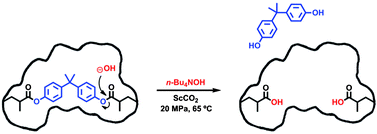Supercritical fluid technology as a new strategy for the development of semi-covalent molecularly imprinted materials
Abstract
Molecularly imprinted polymeric particles with molecular recognition towards

* Corresponding authors
a
REQUIMTE, Departamento de Química, Faculdade de Ciências e Tecnologia, FCT, Universidade Nova de Lisboa, Caparica, Portugal
E-mail:
teresa.casimiro@fct.unl.pt
Molecularly imprinted polymeric particles with molecular recognition towards

 Please wait while we load your content...
Something went wrong. Try again?
Please wait while we load your content...
Something went wrong. Try again?
M. Soares da Silva, R. Viveiros, A. Aguiar-Ricardo, V. D. B. Bonifácio and T. Casimiro, RSC Adv., 2012, 2, 5075 DOI: 10.1039/C2RA20426F
To request permission to reproduce material from this article, please go to the Copyright Clearance Center request page.
If you are an author contributing to an RSC publication, you do not need to request permission provided correct acknowledgement is given.
If you are the author of this article, you do not need to request permission to reproduce figures and diagrams provided correct acknowledgement is given. If you want to reproduce the whole article in a third-party publication (excluding your thesis/dissertation for which permission is not required) please go to the Copyright Clearance Center request page.
Read more about how to correctly acknowledge RSC content.
 Fetching data from CrossRef.
Fetching data from CrossRef.
This may take some time to load.
Loading related content
